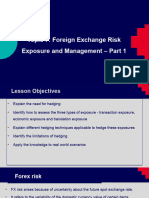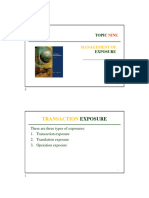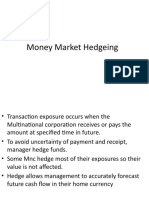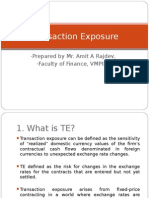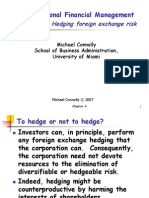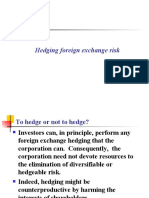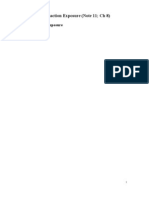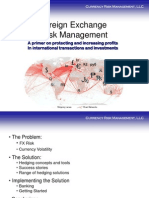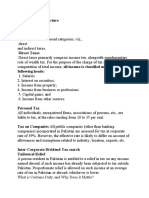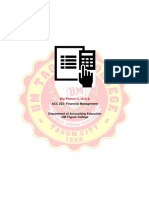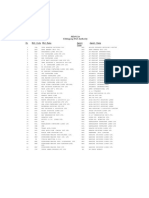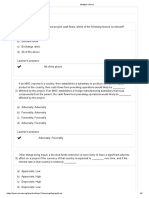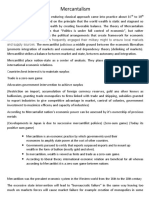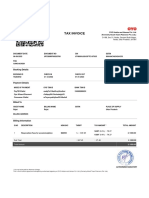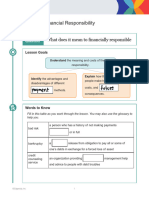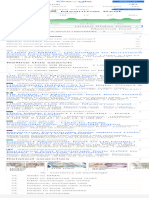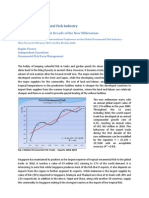0% found this document useful (0 votes)
78 views56 pagesMNC Hedging Strategies
€23,148,148 x $0.55/€ = $12,731,481
3. GE uses $12,731,481 to build plant
One Year from Today
4. GE receives €25,000,000 from Lufthansa
5. GE repays €23,148,148 loan + interest
6. GE keeps remaining €1,851,852
Does this hedge GE's exposure? Yes
GE has offset its future € receipts with € debt.
Does this strategy involve any exchange rate risk? No
GE has eliminated exchange rate risk by borrowing and repaying in €'s.
So in summary, borrowing €'
Uploaded by
koolgalpoorniCopyright
© Attribution Non-Commercial (BY-NC)
We take content rights seriously. If you suspect this is your content, claim it here.
Available Formats
Download as PPT, PDF, TXT or read online on Scribd
0% found this document useful (0 votes)
78 views56 pagesMNC Hedging Strategies
€23,148,148 x $0.55/€ = $12,731,481
3. GE uses $12,731,481 to build plant
One Year from Today
4. GE receives €25,000,000 from Lufthansa
5. GE repays €23,148,148 loan + interest
6. GE keeps remaining €1,851,852
Does this hedge GE's exposure? Yes
GE has offset its future € receipts with € debt.
Does this strategy involve any exchange rate risk? No
GE has eliminated exchange rate risk by borrowing and repaying in €'s.
So in summary, borrowing €'
Uploaded by
koolgalpoorniCopyright
© Attribution Non-Commercial (BY-NC)
We take content rights seriously. If you suspect this is your content, claim it here.
Available Formats
Download as PPT, PDF, TXT or read online on Scribd
/ 56






